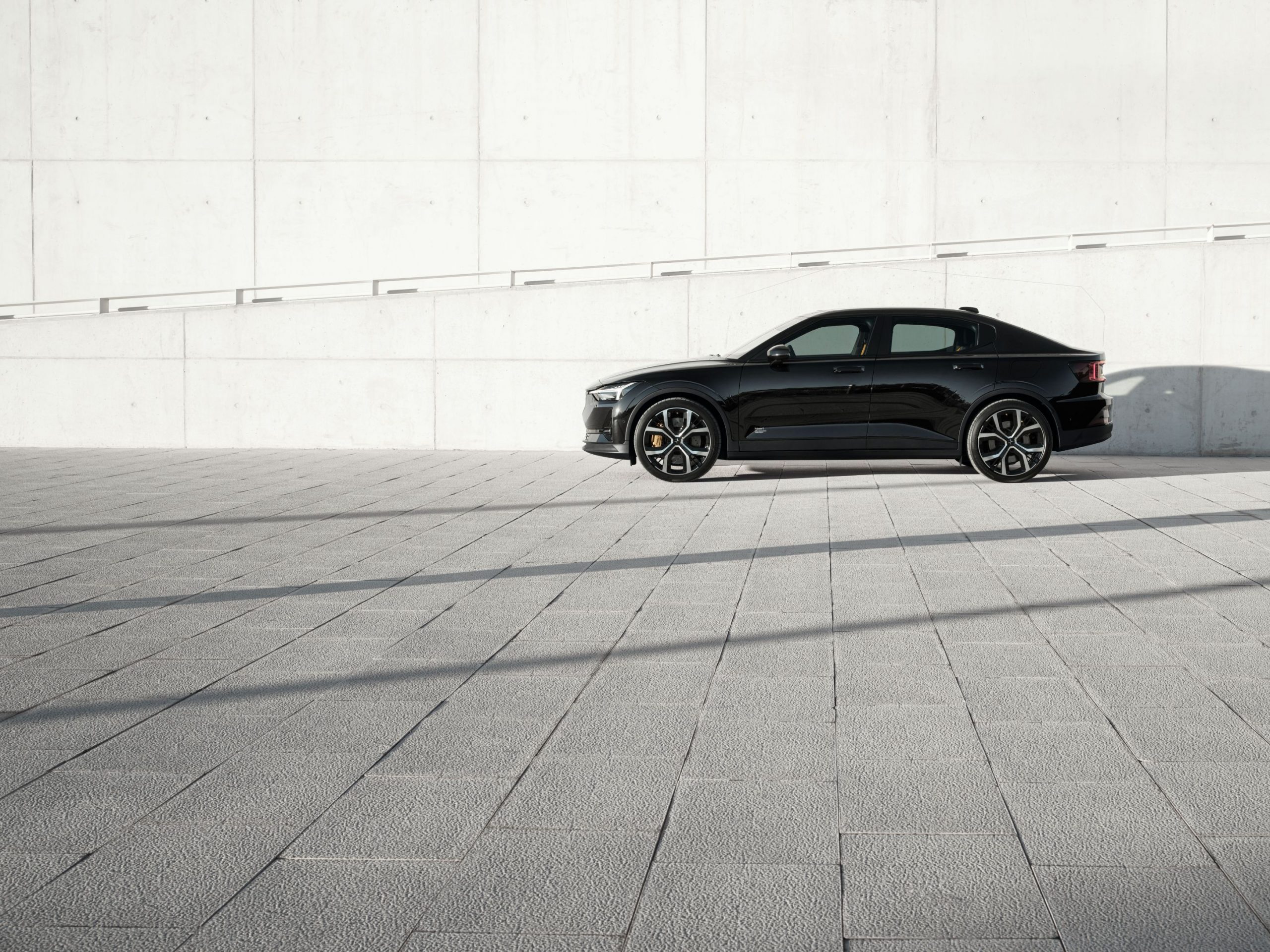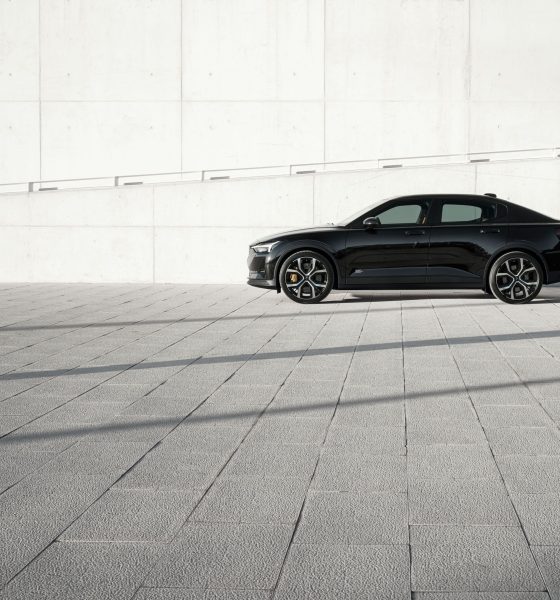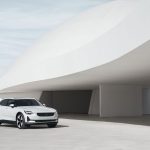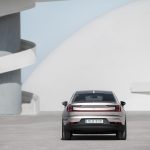

News
Polestar announces pricing for 2023 Polestar 2, along with numerous improvements
Polestar announced pricing for the 2023 Polestar 2, which will start at below $50,000 before any rebates or federal tax incentives. The Swedish automaker also included several new design and efficiency improvements in the 2023 model year, which will make the EV more competitive with other notable cars in the sector thanks to its improved range.
The 2023 Polestar 2 Single Motor configuration will start at just $48,400, or $40,900 when the $7,500 federal tax rebate is included with the vehicle. A competitive price point for the all-electric sedan, Polestar will undercut both of Tesla’s All-Wheel-Drive trim levels of the Model 3, which are priced at $55,990 for the Long Range configuration and $62,990 for the Performance package.
Software improvements rolled out by Polestar have the company anticipating a range increase of the dual-motor configurations of the vehicle by eleven miles. This will bring the EPA-estimated range for the 2023 Polestar 2 to 260 miles per charge. Polestar also included a number of design benefits and new upgrades that intend to improve efficiency and range ratings, with the most notable being the inclusion of a heat pump in the Plus Pack.
The mechanical heat pump is designed to now deliver range improvements in a wider range of temperatures and climates, which can affect EV performance. Cold weather climates are not friendly to all-electric powertrains because it requires more energy to heat the battery cells, which takes away from the driving range. Additionally, climate control features can also decrease efficiency and range. The heat pump helps combat the range loss by using already-heated air in the cabin, among several other mechanical functions that increase overall vehicle efficiency. Tesla was amongst the first EV manufacturers to utilize the heat pump in early builds of the Model Y. The company then translated the proven heat pump system to the Model 3.
Polestar will continue to roll out Over-the-Air updates to upgrade existing Polestar 2 cars equipped with the heat pump at no additional cost to owners.
The Polestar 2 will have optional “packs” that are optional add-ons for owners. The Plus Pack, Pilot Pack, and the Performance Pack both give owners additional features that can improve the ownership experience. The Plus Pack now includes an advanced cabin air filter helping improve air quality within the vehicle. A new air quality sensor and app will also allow drivers to see a breakdown of air circulating outside o the vehicle, including pollen types. The Plus pack adds $4,200 to the vehicle price.
- Credit: Polestar
- Polestar 2 in “Space”
The Pilot Pack is comparable to Tesla’s Autopilot and includes Blind Spot Assist, Cross-Traffic Alerts, Rear Collision Warnings with Mitigation, Adaptive Cruise Control, Pilot Assist, 360° cameras, Automatically dimmed door mirrors, Park Assist, and LED fog lights with cornering functionalities. It costs $3,400 for this package.
The Performance Pack for the 2023 Polestar 2 will equip 68 additional horsepower and 15 lb-ft of torque to the car through a software upgrade. It is only available on Dual-Motor configurations of the car, but the software will be able to purchase as a separate software upgrade — for both existing and future dual-motor cars, with and without the Performance Pack. Polestar plans to release more information on the add-ons this year.
Deliveries of the 2023 Polestar 2 will begin in September with the Single-Motor configuration priced at $48,400. The 2023 Long Range Dual Motor configuration of the Polestar 2 will start at $51,900, with both vehicles eligible for the $7,500 federal EV credit initiative.
I’d love to hear from you! If you have any comments, concerns, or questions, please email me at joey@teslarati.com. You can also reach me on Twitter @KlenderJoey, or if you have news tips, you can email us at tips@teslarati.com.

Elon Musk
Elon Musk and Tesla AI Director share insights after empty driver seat Robotaxi rides
The executives’ unoccupied tests hint at the rapid progress of Tesla’s unsupervised Robotaxi efforts.

Tesla CEO Elon Musk and AI Director Ashok Elluswamy celebrated Christmas Eve by sharing personal experiences with Robotaxi vehicles that had no safety monitor or occupant in the driver’s seat. Musk described the system’s “perfect driving” around Austin, while Elluswamy posted video from the back seat, calling it “an amazing experience.”
The executives’ unoccupied tests hint at the rapid progress of Tesla’s unsupervised Robotaxi efforts.
Elon and Ashok’s firsthand Robotaxi insights
Prior to Musk and the Tesla AI Director’s posts, sightings of unmanned Teslas navigating public roads were widely shared on social media. One such vehicle was spotted in Austin, Texas, which Elon Musk acknowleged by stating that “Testing is underway with no occupants in the car.”
Based on his Christmas Eve post, Musk seemed to have tested an unmanned Tesla himself. “A Tesla with no safety monitor in the car and me sitting in the passenger seat took me all around Austin on Sunday with perfect driving,” Musk wrote in his post.
Elluswamy responded with a 2-minute video showing himself in the rear of an unmanned Tesla. The video featured the vehicle’s empty front seats, as well as its smooth handling through real-world traffic. He captioned his video with the words, “It’s an amazing experience!”
Towards Unsupervised operations
During an xAI Hackathon earlier this month, Elon Musk mentioned that Tesla owed be removing Safety Monitors from its Robotaxis in Austin in just three weeks. “Unsupervised is pretty much solved at this point. So there will be Tesla Robotaxis operating in Austin with no one in them. Not even anyone in the passenger seat in about three weeks,” he said. Musk echoed similar estimates at the 2025 Annual Shareholder Meeting and the Q3 2025 earnings call.
Considering the insights that were posted Musk and Elluswamy, it does appear that Tesla is working hard towards operating its Robotaxis with no safety monitors. This is quite impressive considering that the service was launched just earlier this year.
Elon Musk
Starlink passes 9 million active customers just weeks after hitting 8 million
The milestone highlights the accelerating growth of Starlink, which has now been adding over 20,000 new users per day.

SpaceX’s Starlink satellite internet service has continued its rapid global expansion, surpassing 9 million active customers just weeks after crossing the 8 million mark.
The milestone highlights the accelerating growth of Starlink, which has now been adding over 20,000 new users per day.
9 million customers
In a post on X, SpaceX stated that Starlink now serves over 9 million active users across 155 countries, territories, and markets. The company reached 8 million customers in early November, meaning it added roughly 1 million subscribers in under seven weeks, or about 21,275 new users on average per day.
“Starlink is connecting more than 9M active customers with high-speed internet across 155 countries, territories, and many other markets,” Starlink wrote in a post on its official X account. SpaceX President Gwynne Shotwell also celebrated the milestone on X. “A huge thank you to all of our customers and congrats to the Starlink team for such an incredible product,” she wrote.
That growth rate reflects both rising demand for broadband in underserved regions and Starlink’s expanding satellite constellation, which now includes more than 9,000 low-Earth-orbit satellites designed to deliver high-speed, low-latency internet worldwide.
Starlink’s momentum
Starlink’s momentum has been building up. SpaceX reported 4.6 million Starlink customers in December 2024, followed by 7 million by August 2025, and 8 million customers in November. Independent data also suggests Starlink usage is rising sharply, with Cloudflare reporting that global web traffic from Starlink users more than doubled in 2025, as noted in an Insider report.
Starlink’s momentum is increasingly tied to SpaceX’s broader financial outlook. Elon Musk has said the satellite network is “by far” the company’s largest revenue driver, and reports suggest SpaceX may be positioning itself for an initial public offering as soon as next year, with valuations estimated as high as $1.5 trillion. Musk has also suggested in the past that Starlink could have its own IPO in the future.
News
NVIDIA Director of Robotics: Tesla FSD v14 is the first AI to pass the “Physical Turing Test”
After testing FSD v14, Fan stated that his experience with FSD felt magical at first, but it soon started to feel like a routine.

NVIDIA Director of Robotics Jim Fan has praised Tesla’s Full Self-Driving (Supervised) v14 as the first AI to pass what he described as a “Physical Turing Test.”
After testing FSD v14, Fan stated that his experience with FSD felt magical at first, but it soon started to feel like a routine. And just like smartphones today, removing it now would “actively hurt.”
Jim Fan’s hands-on FSD v14 impressions
Fan, a leading researcher in embodied AI who is currently solving Physical AI at NVIDIA and spearheading the company’s Project GR00T initiative, noted that he actually was late to the Tesla game. He was, however, one of the first to try out FSD v14.
“I was very late to own a Tesla but among the earliest to try out FSD v14. It’s perhaps the first time I experience an AI that passes the Physical Turing Test: after a long day at work, you press a button, lay back, and couldn’t tell if a neural net or a human drove you home,” Fan wrote in a post on X.
Fan added: “Despite knowing exactly how robot learning works, I still find it magical watching the steering wheel turn by itself. First it feels surreal, next it becomes routine. Then, like the smartphone, taking it away actively hurts. This is how humanity gets rewired and glued to god-like technologies.”
The Physical Turing Test
The original Turing Test was conceived by Alan Turing in 1950, and it was aimed at determining if a machine could exhibit behavior that is equivalent to or indistinguishable from a human. By focusing on text-based conversations, the original Turing Test set a high bar for natural language processing and machine learning.
This test has been passed by today’s large language models. However, the capability to converse in a humanlike manner is a completely different challenge from performing real-world problem-solving or physical interactions. Thus, Fan introduced the Physical Turing Test, which challenges AI systems to demonstrate intelligence through physical actions.
Based on Fan’s comments, Tesla has demonstrated these intelligent physical actions with FSD v14. Elon Musk agreed with the NVIDIA executive, stating in a post on X that with FSD v14, “you can sense the sentience maturing.” Musk also praised Tesla AI, calling it the best “real-world AI” today.











